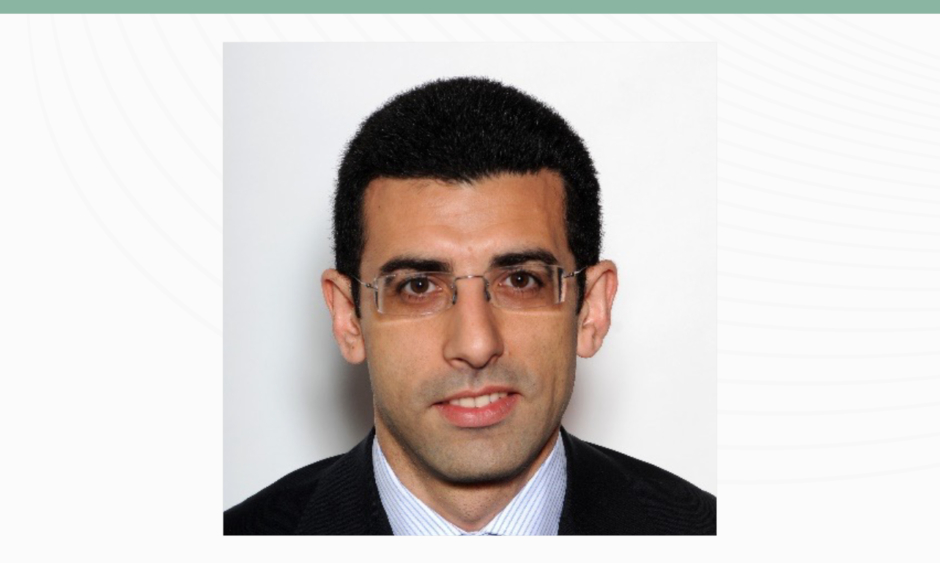Salvatore Brugaletta | Senior Consultant Interventional Cardiologist, University Hospital Clinic, Barcelona, Spain; Associate Professor, University of Barcelona, Spain
![]()
What led you to want to specialise in cardiology, and specifically interventional cardiology?
When I was a medical student, I remained astonished by Attilio Maseri, the Professor of Cardiology at my university at that time. His charisma made me start cardiology with so much enthusiasm that I did not have any doubt about becoming a cardiologist. Later on, when I started my training in cardiology, I had the chance at the very beginning to join a senior interventional cardiologist during a primary percutanous coronary intervention, and it was love at first sight. I still remember the feeling during that night that we did something very positive for that patient with ST segment elevation myocardial infarction, whose pain was relieved so quickly by reopening the artery. Following that night, I am still here treating patients and improving their quality
of life.
What are your particular research interests, and have these shifted since you began to practice?
My research interest has always been atherosclerosis and all its different aspects, from pathology to treatment. When I was a medical student, I was involved in basic research, specifically looking at lymphocyte populations in patients with unstable angina by using flow cytometry. I have worked on how endothelial dysfunction may contribute to coronary plaque worsening, and on comparing coronary stents for treating patients. In particular, under the supervision of Patrick Serruys in Rotterdam, the Netherlands, I was one of the first studying bioresorbable vascular devices in patients through various intra- and extracoronary imaging techniques. Then I worked with Manel Sabate, and am still working with him today, on testing the best device for treating patients with ST segment elevation myocardial infarction.
You have served as invited faculty, or given lectures, at around 100 international meetings, for the likes of the European Society of Cardiology (ESC), the European Association of Percutaneous Cardiovascular Interventions (EAPCI), and Transcatheter Cardiovascular Therapeutics (TCT). What do you feel are the benefits for yourself, as a clinician, to be so involved in the wider field? Which ideas do you hope to promote?
To join and participate in a conference always has a benefit, regardless of whether you are faculty, a speaker, or an attendee. You are exposed to new science, technology, and drugs; you share opinions with your peers; and when you come back to your daily clinical life, you feel enriched from such an experience, and you may improve the treatment for your patients. On the top of this, when you are faculty, you have a big responsibility towards the attendees, as you are there not for increasing your visibility, but for helping others, and for teaching them. Jean Marco, the founder of PCR, whom I had the honour to meet several times, always says we are here for others. I totally agree with him; congresses and courses are here for teaching others, and it is the responsibility of the faculties to do this in the best possible way.
You are an Associate Professor at the University of Barcelona, Spain. How have you found your teaching has adapted since the COVID-19 pandemic? What have been the drawbacks, and have there been any unforeseen advantages in the shift to online learning?
The COVID-19 pandemic has unfortunately disrupted teaching at the universities overall. Medical students need the contact with their teachers, and even more so with patients. The latter was totally missing during the worst part of the pandemic, when hospitals were full of patients with COVID-19. Moving from face-to-face teaching to online learning has reorganised our lessons, because in an online class you need to catch more of the attention of the students. In this way, we have discovered many resources to make our teaching more attractive. Moreover, we have started many online resources useful for students and for fellows, such as webinars, case sharing, etc.
You have authored more than 400 manuscripts over your career to date. Can you pick out one or two which led you to discover something particularly important, or groundbreaking, within the field of interventional cardiology?
I am thinking about two papers. One describes how bioresorbable scaffolds may create a sort of cap on the top of an atherosclerotic plaque, potentially leading to stabilisation of a thin-cap fibroatheroma by transforming it into a thick-cap fibroatheroma. The other also belongs to the field of bioresorbable devices, and shows how vasomotion of the coronary segment treated by bioresorbable scaffold depends either on the grade of disappearance of the device from the artery, or on the composition of the plaque underneath the devices. These two concepts of plaque sealing and vessel vasomotion were two benefits of bioresorbable scaffolds, and they should be the starting point for a new generation of these devices, whose need in clinical practice has not disappeared.
In January 2022, you co-authored a paper entitled ‘Mid-term effects of SARS-CoV-2 infection on cardiovascular outcomes’. Please summarise what you discovered during this study, and what you believe the consequences of the pandemic will be on cardiovascular outcomes in the long-term.
The rationale behind this study was to understand if severe acute respiratory syndrome coronavirus 2 infection may have cardiovascular consequences beyond the acute phase. We analysed data from patients who underwent a PCR test, dividing them into two groups according to the result of the test. We found that the cardiovascular outcome was worse in patients infected versus control, but it was mainly driven by in-hospital events, without any consequences in the mid-term. We have now expanded this population by adding data from other centres, and we are currently working on 1-year outcome. We will then see if this trend will be confirmed in a larger population with a longer follow-up.
You have not one, but two PhDs, from Erasmus University, Rotterdam, and Sacred Heart University, Rome, Italy. Please tell us more about what you researched during your PhDs, and what led you to read for a second doctorate?
I was already in the middle of my first PhD in Rome, conducting basic research on vascular function after chronic total occlusion recanalisation, and I had the opportunity to go abroad to the Erasmus University, working with Serruys. He offered me the possibility to read for a second PhD about bioresorbable scaffolds. I did not have any doubts in starting, in parallel, a second PhD with him about this topic. I worked very hard during those 2.5 years, publishing more than 30 papers in 1 year, and being able to read both PhDs 1 month apart. Although in the end it is something that does not matter from an academic point of view, I feel proud of myself, because hard work always has a reward, and I like to have two PhDs on different topics, one from my own country, Italy, and the other one from the Netherlands, which I see as a recognition for all my time spent abroad. We live in a global world where students should be encouraged to move abroad for studying, and to see how the same problem may have different, and equally right, solutions.
How has the landscape of interventional cardiology shifted since you began to practice, and how has the technology developed?
The landscape has totally changed since I began. When I started, we were only focused on coronary interventions, and now not only are we better at treating the coronaries of our patients, but we are also treating structural heart disease, such as aortic stenosis. During the last 20 years, technology has had a strong evolution in terms of materials and devices, helping us to make difficult things easier. When I began, for example, nobody was thinking about percutaneous treatment of valvular disease. And it is incredible to see today how easy a transcatheter aortic valve implantation procedure may be. On the top of this, it is not only a matter of technology, but also a matter that today every procedure is more standardised, and there is much more consensus on how a specific coronary or structural procedure should be approached. All of these factors altogether have improved our profession as caregivers for our patients.
Which recent, note worthy technological advances are you most excited by in the field of interventional cardiology, and why?
I am very much looking forward to percutaneous mitral valve implantation. Some devices are already on the market, and others will come soon. They may currently be implanted through a surgical transapical approach, but a plan to make them easily implantable by a trans-septal approach is under development. When this approach is feasible, safe, and effective, it will represent a major step forward in this kind of procedure, giving us the possibility to treat those patients who cannot be treated today. ■








